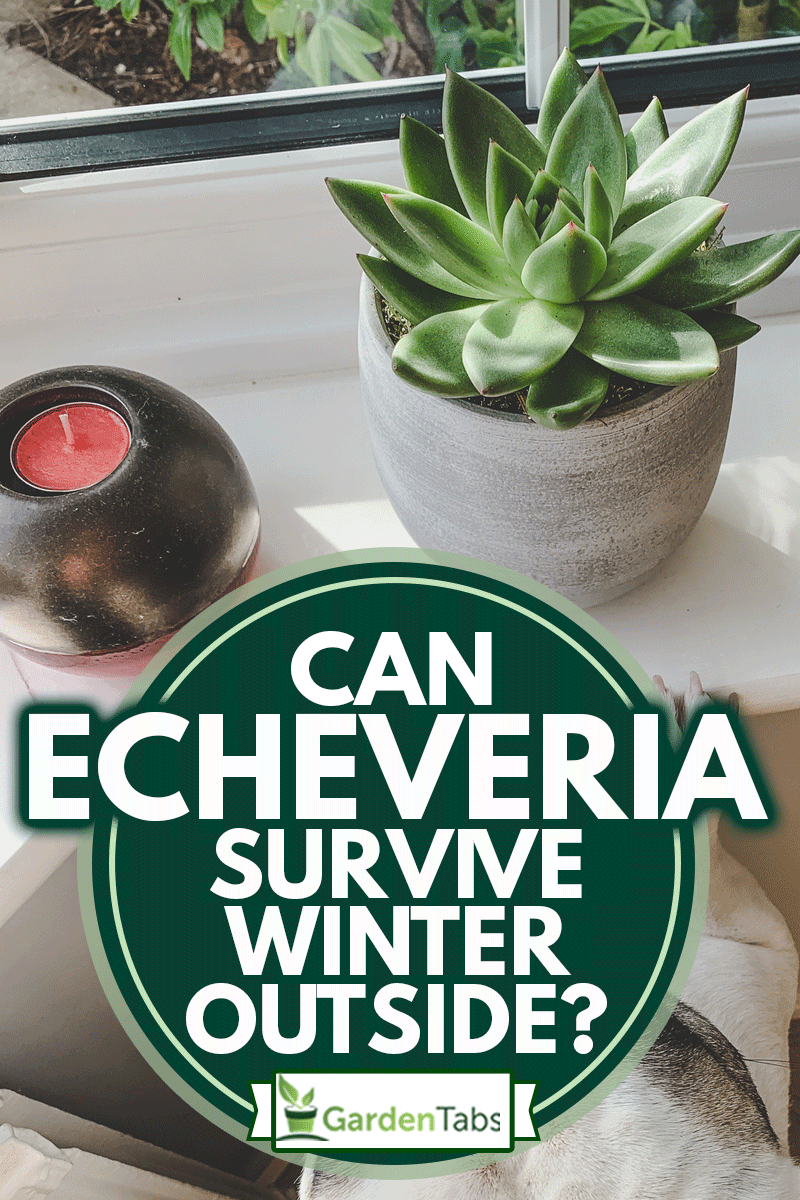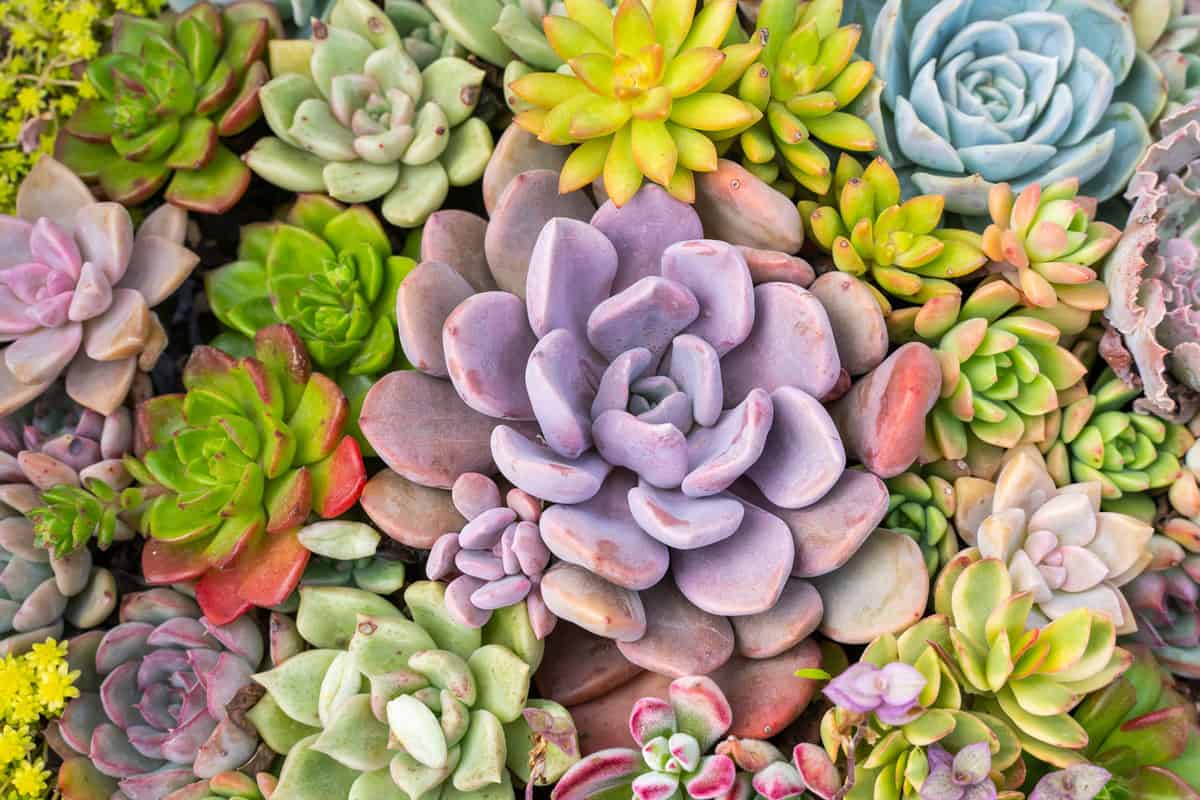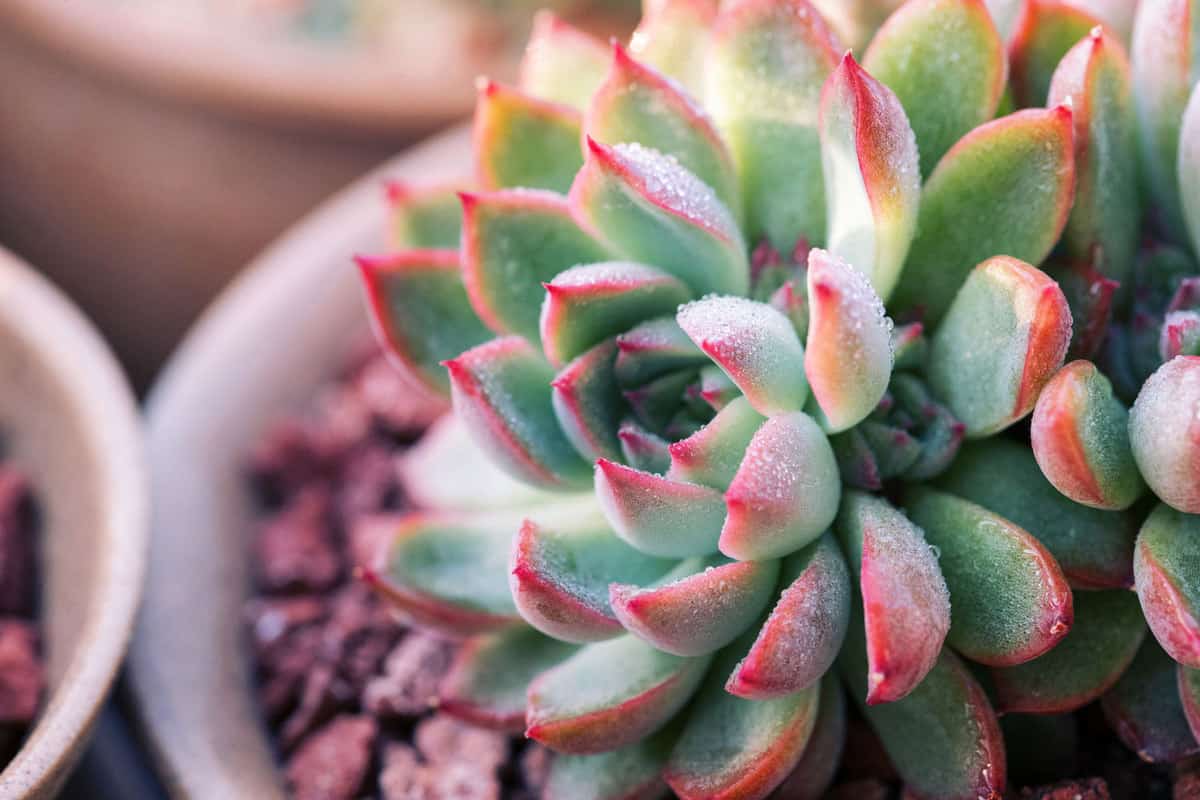Deciding whether or not to keep your plants outside during the winter can be tricky without some help.
Echeveria cannot survive long-term outside in harsh winter conditions. This unique-looking succulent does not do well in colder temperatures and cannot withstand weather under 35 degrees.
In general, succulents do not like cold weather and should be relocated indoors throughout the winter months. Echeveria thrives in climates between 60 and 85 degrees Fahrenheit, so an outdoor setting in the winter may not be a good idea.
As we get into this post, we will share the best ways to care for Echeveria in the winter and tag some helpful products. Succulents are an easy, low-maintenance plant option, but you've got to be more careful when it comes to their climate and temperature. With that said, let's get right into this topic!

What Is An Echeveria?
Echeveria is a large genus of flowering plants that belong to the Crassulaceae family. These thick-leaved plants are native to Central America, Mexico, and northwestern South America and enjoy moderate to warm climates.
Echeveria is a prevalent indoor succulent option and also thrives outdoors in places with reasonably warm year-round temperatures.
This desert-friendly succulent is a polycarpic plant, meaning that it blooms every year. These succulents grow in USDA Plant Hardiness Zones 9, 10, and 11 and prefer sandy, acidic soil.
Is Echeveria Drought-Friendly?

When it comes to Echeveria being drought-friendly, we found that it is. Although this plant is sensitive to climate, Echeveria does not need regular watering.
This desert succulent is an excellent option for places with little rain and does well in dry climates. We recommend watering your Echeveria twice monthly in the spring and summer and once during the fall and winter.
How To Overwinter Echeveria?

From what we found, the best way to overwinter Echeveria is to bring your plant inside. If you live somewhere with winters that include freezing temperatures often, Echeveria needs to be relocated indoors until spring.
A good rule of thumb is to prune any dead areas off your plant before the winter season, regardless of where you live. Echeveria doesn't need to be kept extremely warm, but the temperature in your home or area where you have them should ideally stay above 45 degrees.
Can I Use Artificial Light On Echeveria?
If your home doesn't have a bright, warm window for your plants, artificial light will work just fine. From what we read, make sure to invest in an LED heat lamp or light and keep it within three inches of your Echeveria.
Surprisingly, artificial light is useless if it is too far from your plants and isn't beneficial past a few inches indoors. A plant light does not need to be extremely warm, but it does need to provide enough light to your succulents.
This dual-headed light features red and white LEDs, which help increase photosynthesis indoors, and has five dimmable light settings.
Check out this LED plant light on Amazon here.
What Happens If Succulents Get Too Cold?
When it comes to the effects cold weather has on succulents, the damage can be deadly. More often than not, succulents will begin to rot in freezing weather and essentially die from their roots up.
Although this type of plant is a hardy species, cold weather is one of the few things a succulent can not fend off. Typically, succulents should not be in weather under 40 degrees Fahrenheit and can not usually survive in any temperature below freezing.
Will My Succulent Die If It Freezes?
If the temperature dropped without warning and your succulents have frozen, hope is not all lost. If your succulent freezes, give it time to adjust back to its normal temperature.
The best thing to do with a frozen succulent is to leave it alone for a few weeks and then prune any dead areas. Once you have done that, check to see if there is any new growth and if your plant is salvageable.
Can A Succulent Come Back To Life?

Although succulents are pretty easy to grow and manage, things can happen. From what we found, if your succulent starts to die, there are ways to bring it back.
Succulents often react to overwatering and pests the worst, so keep an eye out for those factors. A plant-safe pesticide and a new, well-draining planter are always a good idea to try first if you notice a dying plant.
Should I Water My Succulent During Winter?
If you live in a place with moderate winters and keep your succulents outside, once per month is perfect for watering. Succulents tend to go through a dormant phase during the cooler months and do not need as much water as they do throughout the year.
Although a succulent can survive colder weather, watering one before a drop in temperature can stun your plant and even kill it.
Where Is The Best Place To Plant Echeveria?
When it comes to the best place for an Echeveria plant, we would say somewhere with plenty of sunlight. As long as you live somewhere with moderate winters, you can easily grow Echeveria outdoors in your garden.
These succulents prefer sandy, slightly acidic soil and a south-facing placement. If you have other succulents in the same area, make sure to leave a few inches of space between them so your plant can properly root itself in the ground.
How Often Should I Fertilize Echeveria?
Regardless of where you plant an Echeveria, fertilizer is always a good idea. Regarding a fertilizing schedule, you can give your plant a bit of extra TLC about once per month.
The best time to add fertilizer to an Echeveria plant is right before its spring/summer growing season each year. We recommend finding nutrient-rich succulent plant food for your Echeveria to see the best results.
This nutrient-filled plant food is a slow-release alternative to liquid and promises to fertilize your plants for up to nine months per feeding.
See this product on Amazon here
To Wrap It Up
Whether you made it here as a newbie in the succulent world or just needed some advice for the winter months, Echeveria is a pretty hardy plant. When it comes to the outdoors in the winter months, we suggest you bring your succulents inside to be safe in case of freezing weather.
Ideally, your Echeveria needs to be in a moderate climate year-round, so if that is not possible where you live, consider full-time indoor growing.
This type of succulent can withstand temperatures down to about 45 degrees without significant damage, which is good to know for outdoor growers. Regardless of where you decide to plant an Echeveria, make sure it has good drainage, plenty of light, and a moderate climate.
Congrats, you made it to the end! Head on over to these helpful plant-related articles for even more garden advice!


